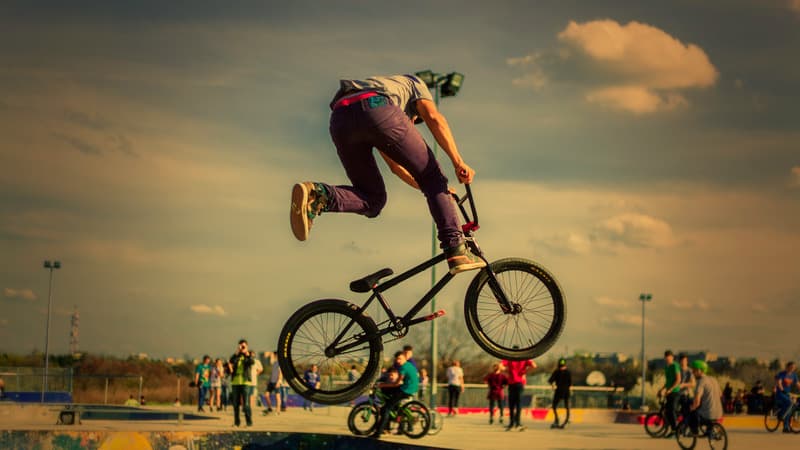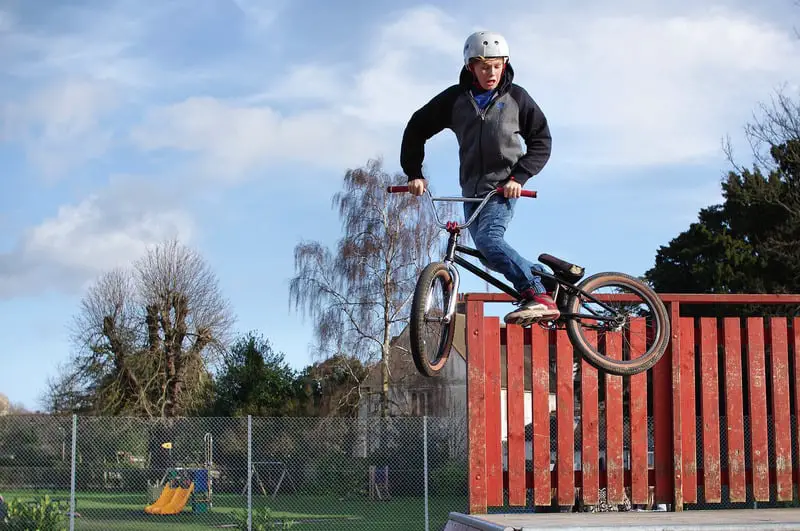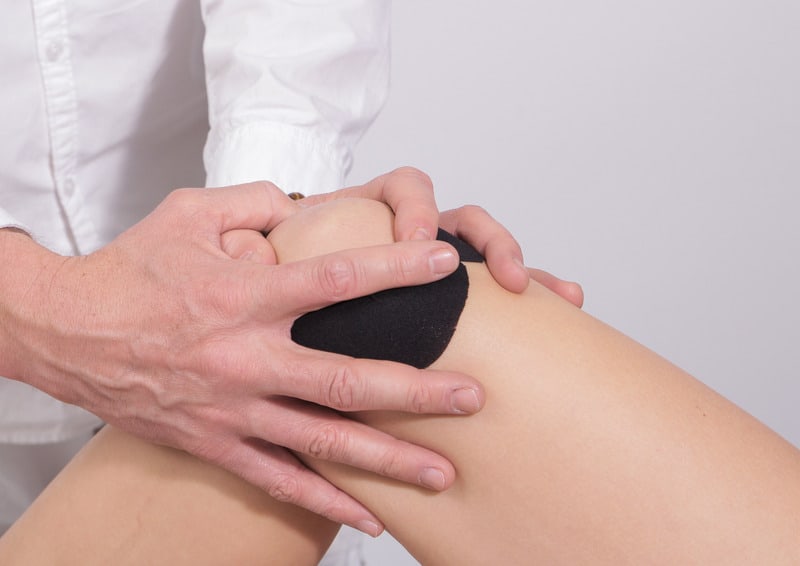
If you have been enjoying learning new tricks and jumps on your BMX, you are now probably wondering whether you can also use your beloved bike for your daily commute. To answer that question, there are some characteristics that you should consider in order to have a safe and comfortable commute.
Commuting on a BMX bike is possible, but low saddle, reduced braking capabilities, lack of mudguards, and low handlebar of the bike makes it an activity for expert cyclists. Moreover, there will be only a little space for luggage and can add fatigue to your knees and joints.
Find out how to make your BMX bike commute safe and more enjoyable below.
What Are BMX Bikes?
Commuting on a BMX guide can be an excellent activity and offer you the chance to experience a healthy endurance and core strength training. While these bikes are not designed to be used for long-distance commutes, they can be used for that purpose. However, keeping into considerations, the characteristics that make them unique is essential.
BMX bikes, and the subcategories of this bike type, are some of the latest additions to the vast array of bike models out there. BMX bikes, which refer to a hybrid between bicycles and motocross, are an alternative type of bike born in the 1970s in Southern California.
While initially created by kids to make the most out of the motocross tracks where they would play, today riding a BMX is a recognized sport and competitions can be found internationally.
Since the origin of this type of bike, BMXs have evolved to meet the needs of their riders and acrobats who enjoy aerial tricks and jumps. Commuting on them does not come easy to every cyclist, but it is not impossible.
Different Types of BMX Bikes
Before figuring out whether BMX commuting is the right choice for your lifestyle, you should consider that there are different types of BMXs. Each of them boasts unique characteristics and peculiarities to keep in mind. While a specific model might be suitable for you, others might not be.
In the table below, you can find an overview of the different types of BMXs and other hybrids on the market. While they might look similar to an inexperienced eye, some are better suitable for commuting than others.
| Type | Features | Use | Suitable for commuting? |
| BMX | Rear V brakeThin tiresLow-profileSteep head tubeLightweight | BMX tracks racing | Yes, for expert cyclists |
| Dirt-Jump, Street or Park | VersatileKnobby tiresU-brake (can be brakeless) | Dirt jumping, tricks, grinding | Only if brakes are present or mounted |
| Cruiser | LightLarger frameMounts 24-in wheelsTaller | Dirt-jumping, but versatile | Yes |
| Flatland | LightZero-offset forkSmall frame | Tricks (flatland) and Artistic Cycling | Not as suitable |
The Characteristics of BMX Bikes
Independently on the selected type of BMX, there are some characteristics you should keep in mind before attempting your first commute. These are:
- Handlebar
Handlebars are typically bent and set much lower than the handlebar of a standard road bike. Generally, they are called “four-pieces” due to the way they are constructed. The 360° movement they can complete allows for precision and ultimate control on the road. However, getting used to this type of riding can make the commute more complex.
- Wheel and Tires
The wheels and tires of BMX bikes are often smaller than the ones on a mountain bike or road bike. However, certain types of BMXs can be fitted with wide, 24 to 26 inches wheels. These provide higher rolling resistance and therefore improve balance and control.
- Brakes
Brakes are often what truly set a BMX bike apart from other models. They can be fitted with U-brakes, V-brakes, or even be brakeless. If they are brakeless, it is not recommended to ride them on your commute or on any road in which cars and other vehicles are allowed. This can seriously compromise the level of safety on the road. However, brakeless BMXs can be fitted with U-brakes effortlessly and ridden on flat roads.
- Frame
BMXs are designed for tricks, jumps, and aerials twists. Their lightweight, short, and overall small frame helps an expert rider when jumping.
- Weight
While each model is different, BMXs are usually much lighter than a lot of other bike models and easy to pick up. However, when shopping for a BMX, riders should keep in mind that the higher the price is, the less the bike will weigh. This is because higher-quality materials are often used in its construction.
Adjustments You Should Make to Commute on a BMX
Deciding to commute with a BMX is the ideal choice if you already have one of these bikes in your garage and you are looking for a way to make the most of it. However, generally speaking, they are not considered the ideal choice for long-distance commutes and road riding.
If you are already comfortable riding your BMX, there are some easy adjustments you can make to make your bike more adequate for a commute. Below you can find the necessary changes to make before jumping on the saddle.
Swap the Saddle for a Padded One
Undeniably, BMXs are not designed for long, comfortable rides in which you can relax back on your saddle. A confirmation of this is the hard, long seat they often come furnished with. If this is the case of your bike, you might need to consider swapping the saddle for a padded one.
However, even by doing so, you need to count on the fact that you won’t be doing much sitting when riding your BMX to work. Nonetheless, if you are weighing at a traffic light or you wish to sit for a bit, investing in a padded saddle can add a layer of comfort to your commute.
Add Mudguards
BMX bikes seldom come with included mudguards or fenders. If you love to ride your BMX on skate parks and learn new tricks with it, you would know that mudguards are only another obstacle to overcome. Additionally, you won’t be facing much mud in these locations.
Oppositely, if you are riding your BMX on motocross tracks, the quantity of mud present here will only end up being trapped between the wheel and the mudguard. In this case, aside from the inconvenience, the restricted mobility can represent a health hazard.
Instead, when riding on the road, there are entirely different factors to consider. Firstly if you are heading to work, you are probably in your suit or office-friendly clothes. In this case, adding mudguards can preserve your smart look until you get off the bike.
Make Sure the Bike Is Equipped With Brakes
As we have seen, not all BMXs come with brakes. However, these are an essential element you will need to include to ride safely, especially in trafficky roads or urban areas. If your bike comes with brakes, there are different types to consider – find an overview below.
These are the most common type of brake, and you are likely to see them on park bikes and street bikes alike. They are highly durable and compact, which allows them to stay out of your way when practising your tricks. They get their name from the characteristic U-like shape.
These are the more common kind on race bikes. They are mighty and offer potent braking, even in adverse conditions. While some parts of these brakes are exposed and can cause harm during tricks, they are ideal for commuting when you are not planning on performing aerials.
- Calliper
Similar to U and V brakes. However, instead of mounting the brake on bosses, callipers are drilled into the frame.
If the bike you have pickles is brakeless and you still wish to use it for your commute, you need to consider whether you will add a U or V brake. In any case, your bike needs to have a brake system that you can count on when riding amidst traffic, vehicles, pedestrians, or poor visibility conditions.
Add Lights and Reflectors
Since BMXs are not originally designed to be ridden on roads or in traffic, they often lack essential visibility devices and details. However, as explained by the UK Road Vehicles Lighting Regulations 1989, your bike must have the following:
- A front reflector
- A rear (orange or red reflector)
- Reflectors both at the front and back of the pedals
In situations of poor visibility, you will also be required:
- A front white light, steady or flashing
- A rear light, orange or red, steady of flashing
Other devices you could use to increase the level of visibility on the road include reflector bands around your ankles and reflective vests.
Wear a Helmet

Wearing a helmet is not explicitly required by the UK cycling regulations for riders who don’t travel along highways. However, especially when riding a BMX, there are several hazards that you could face on the road. In this case, wearing a helmet becomes paramount to ensure you are safe in case of an accident.
While these might not necessarily be severe, even a fall can cause mild injuries. You can avoid all this by wearing a helmet, especially when travelling through high-traffic areas.
Considerations to Make if Commuting on a BMX
If you are still happy to commute by BMX, there are a few more considerations to make, some positive, some negative. BMX bikes are designed to offer riders complete freedom of movement and optimal control over every movement. The result is a lightweight, highly manoeuvrable bike that is extremely precise when off-road or uneven terrains.
However, the kind of riding you will do when commuting to work can be different from this scenario. While it is possible to commit to such routine, it can be a less comfortable option.
In any case, if you wish to have a second opinion from who commuted daily on a BMX, watch the video below:
Consider the Length of Your Commute
The length and type of your commute are one of the most determining factors when deciding to ride your BMX to work. As we have seen, BMXs are not designed for long rides or commutes. They are also not made for the riders to sit down while artistically performing tricks.
These characteristics remain valid whether you are riding on a motocross track or one of your town centre’s streets. Therefore, if your commute is no longer than 15 minutes and you won’t be riding uphill or downhill much, this bike is perfectly suitable. And, in some cases, can be an excellent form of exercise.
However, if you need to cover long distances to get to work and back, BMXs require you to stand and pedal continuously. Aside from creating fatigue and adding strain on the joints, this can require you to put much more effort into your commute. And, don’t forget that the large tires will be adding resistance and reducing your speed!
It Can Be Hard on Joints or Knees

As we have seen, standing while pedalling can add strain on the joints and knees. This might not be an essential factor to consider if you have not been suffering from such issues. However, if you are thinking of using your BMX often for this purpose, it can easily create long-term problems that you might have to address in the future.
Indeed, your cycling position can be a determining factor in whether you will suffer from pain in your joints and knees. The issue can be worsened by the lack of other types of professional equipment, such as adequate cycling shoes. Ultimately, such pains could be caused by an inflammation that can prevent you from using your bike for a long time after you have started suffering from them.
While bike commuting on a BMX is possible, especially if you are an expert in this type of cycling, you should avoid long-distance commutes. This is mainly due to the health problems that this captivity can cause in the long run.
You’ll Have Little Space for Your Luggage
When practising your streaks in a park or ramp, you might not have to worry about luggage. However, when it comes down to cycle to work, you are likely to carry a laptop bag with you there and back to your home. However, depending on your profession and day schedule, you might need to carry a larger number of items.
In the case of road bikes and even mountain bikes, you will be able to install a carrier or rack at the back. This can also improve your balance while riding. In the case of a BMX, due to the alternative shape of the frame, this is not always possible. While you might find a custom-made, removable rack that fits your need, a BMX is generally not designed for this use.
The Large Tires Might Require You to Pedal More
While some types of lightweight BMXs are suitable for races, these bikes are not built for speed. Since you would be standing on the bike, you are already working against the aerodynamics of the bike.
However, the large, thick, and knobby tires of the bike also represent a contributing factor. Indeed, while the large surface that remains in contact with the terrain provides for higher adhesion and balance, it also increases the rolling resistance coefficient. In turn, this will require you to pedal faster and with more energy to travel through the same distance that you would cover more efficiently with a standard road bike.
Nonetheless, the added balance that these tires offer is perfect for wet-weather riding or when you are carrying extra weight, such as a bag, with you.
It Can Be an Excellent Endurance and Core Workout
Undoubtedly, cycling is one of the best training or workouts you could undertake. The benefits of this discipline are endless. They include, but not limited to:
- Promoting heart health
- Building muscle
- Burning calories
- Improving mood
- Keeping at bay stress, anxiety, and depression
Cycling for 30 minutes per day, five days a week, even if only to your workplace, is considered enough exercise for a healthy individual. However, cycling might not help as much toward your core or endurance training, especially if you only cycle on flat terrain, with a road bike, and only a few minutes a day.
Instead, due to the bike resistance – and the precision it requires -, BMX riding can develop your core, abs, upper body, and back. All this, while offering you the chance to test your endurance. If you wish to track your progress, apps like Strava can help you keep an eye on calories burned, speed, distance, and time.
Conclusion
If you have decided to undertake your commutes on the saddle of your BMX, you need to keep in mind that this is a bike like no others. It is not designed for comfort, but rather for freedom of movement an off-road control. The large tires increase the rolling resistance, which can slow you down but offer more balance.
Instead, the low seat will cause you to pedal from standing, which can be an excellent exercise but also cause issues to the joints. Ultimately, if your commute is short and through flat terrains, BMXs are suitable.
Sources
- The University of Southern California: Guide to BMX Freestyle Bikes
- University of Florida: Types of Bicycles
- Park Tool: U-Brake
- Evans Cycles: Brakes
- Legislastion.gov.uk: The Road Vehicles Lighting Regulations 1989
- ETA: Legal advice for cyclists
- UR Medicine: Cycling Injuries
- Wikipedia: Rolling resistance
- Harvard Health Publishing: The top 5 benefits of cycling
- WHO: Physical Activity and Adults
- Strava

